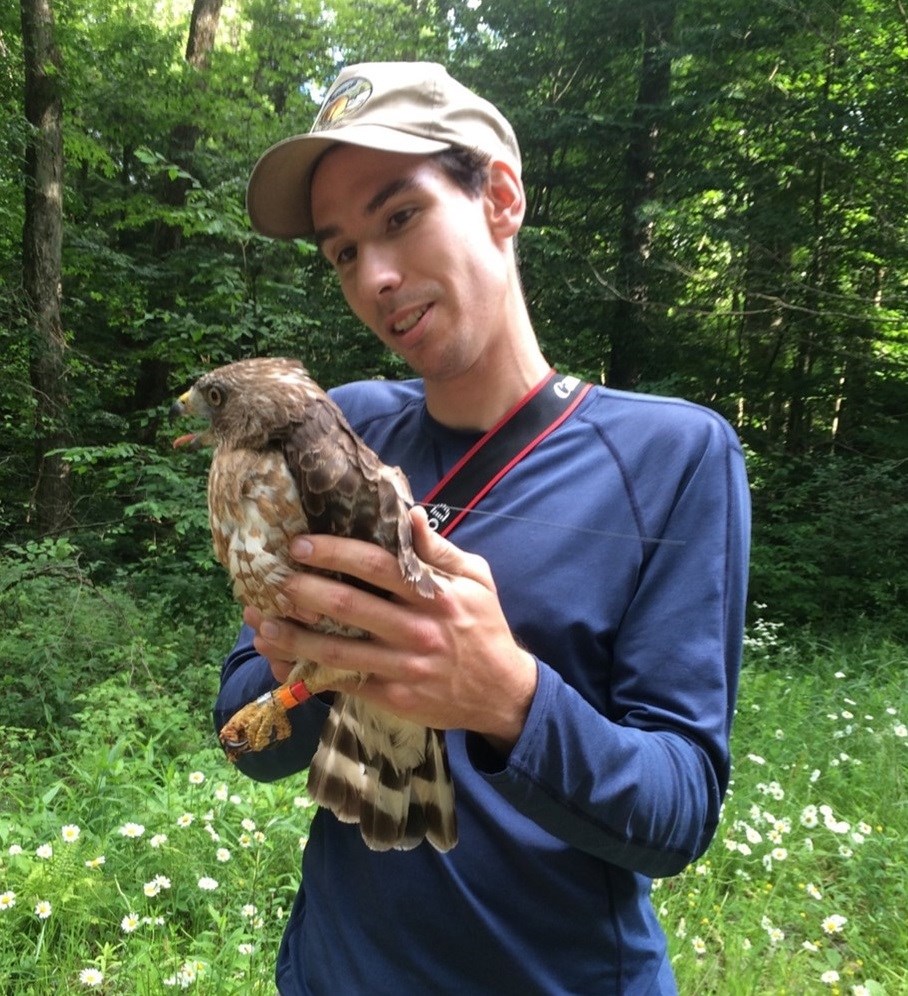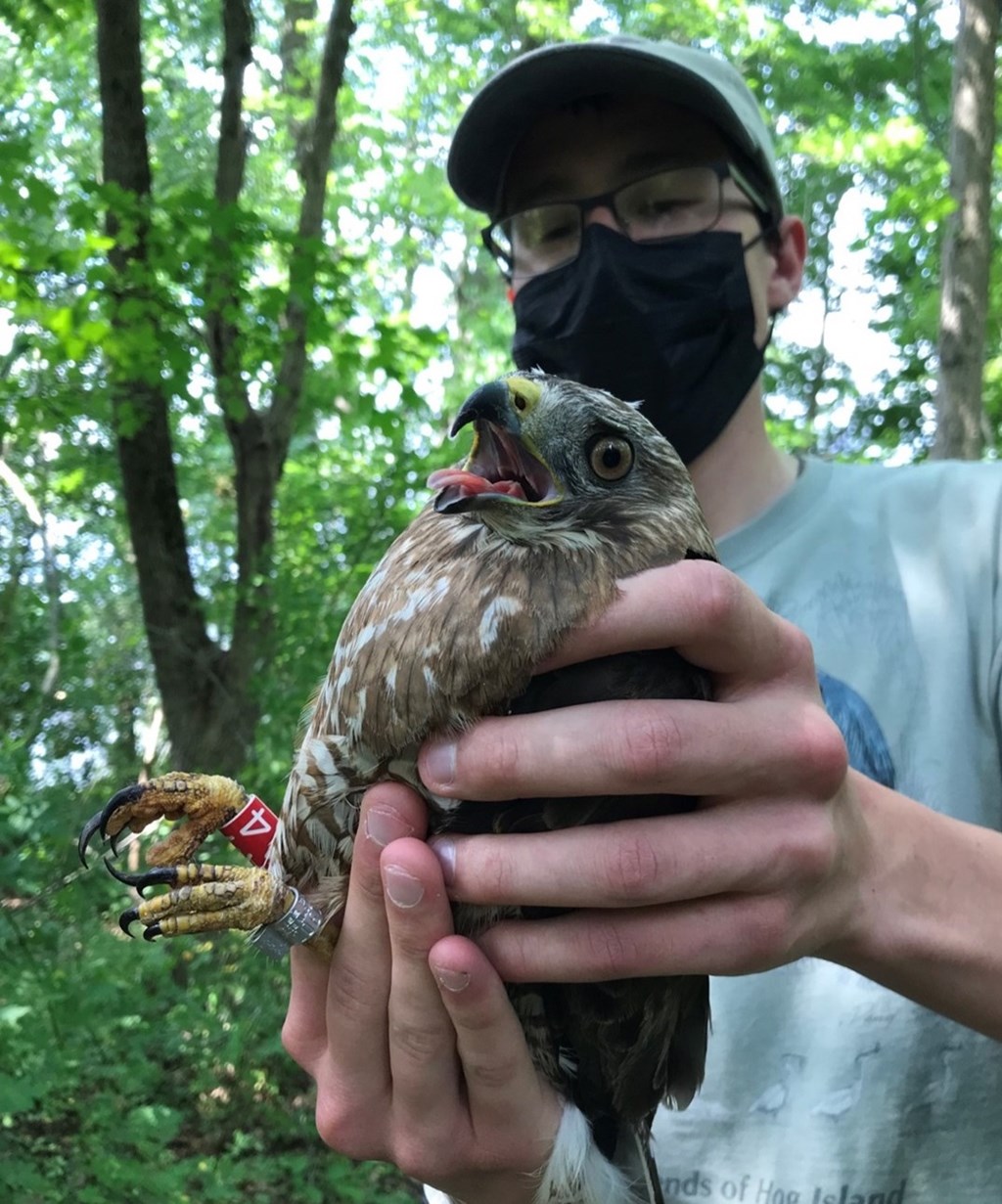Two Young Hawk Mountain Researchers Published in The Journal of Raptor Research
Posted on December 20, 2022 in Science

Hawk Mountain Sanctuary is proud to announce that the latest issue of The Journal of Raptor Research features papers from two young scientists who made their start at the Sanctuary. Field research assistant Zach Bordner and long-time volunteer Paul Heveran have both devoted long hours of research towards the conservation of the broad-winged hawk, Hawk Mountain’s most abundant migrant and focal species for one of the Sanctuary’s staple research projects. With the publication of these two papers, Zach and Paul make their latest contributions to the growing body of knowledge that surrounds this secretive forest raptor.
In a new study titled “Broad-winged Hawk Size Varies by Sex and Latitude in North America,” lead author Zach Bordner, along with Drs. Rebecca McCabe and Laurie Goodrich and collaborators from eastern North America, analyzed morphometrics (i.e. body mass, wing chord, and tail length) of over 100 broad-winged hawks captured during the breeding season in Wisconsin, Maryland, and Pennsylvania (USA), and Ontario, Canada. The results of this study showed female broad-winged hawks have overall greater body mass, longer wing chord, and longer tail length than males in Wisconsin, Pennsylvania, and Maryland. Researchers were able to predict sex with 99% accuracy using only body mass as a predictor in Wisconsin populations, and 100% accuracy using body mass, wing chord, and tail length as predictors in Pennsylvania and Maryland populations. Identifying a reliable method to determine the sex of broad-winged hawks in the field will greatly increase researchers’ knowledge of population dynamics, sex-specific behaviors and habitat use, and ultimately lead to the development of more effective conservation strategies, a goal Hawk Mountain is currently working towards. Results from this study also showed that birds from different regions in North America displayed geographic variation in size, with hawks from Wisconsin being larger than hawks from Pennsylvania and Maryland, and hawks from Ontario being the largest overall.

The second paper, titled “Age-class Difference in Wintering Distribution of Broad-winged Hawks,” also highlights broad-winged hawk research being done at the Sanctuary. Lead author Paul Heveran, together with Dr. Laurie Goodrich and Senior Research Biologist David Barber, examined eBird data from 2000 to 2020 on wintering broad-winged hawks in hopes of gaining a clearer understanding of their winter distribution by age. To determine if immature hawks were sighted farther north than adults, the research team looked at 2,164 broad-winged hawk sightings with age data and 25,797 sightings without age data. They determined the mean latitude of wintering adults, 9.9°N, was farther south than the mean latitude of wintering immatures, 15.69°N, although sightings of both showed overlap. A higher proportion of immatures were observed overwintering in the southern United States, as opposed to the typical overwintering behaviors of adults that migrate into northern South America. When researchers analyzed birds wintering south of the United States., immatures were still found farther north than adults. The winter distribution differences could result from behavior called short-stopping, which occur more often in immatures. Understanding the geographic distribution of broad-winged hawks during winter and how it differs with age is critical to identifying the habitats of highest conservation priority.
Zach found himself at Hawk Mountain after graduating from Juniata College in 2012 with his B.S. in ecology, and Paul has volunteered at the Sanctuary since his teen years and recently earned his B.S. in biology from DeSales University. To read more from Zach Bordner and Paul Heveran, follow the links to their scientific papers here (#359 and #370). If you are interested in learning more about Hawk Mountain’s research on broad-winged hawks, click here.